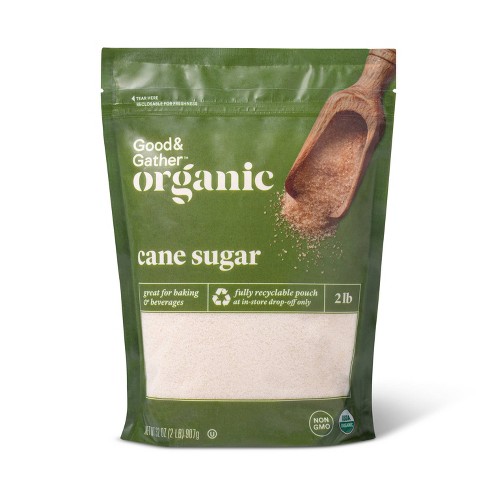Cane Sugar Processing: From Field to Table-- A Step-by-Step Overview
Cane Sugar Processing: From Field to Table-- A Step-by-Step Overview
Blog Article
An Extensive Overview to the Environmental Influence and Sustainability Practices in Cane Sugar Handling
The environmental effect of walking stick sugar handling provides a complicated selection of challenges that warrant mindful evaluation. From soil destruction and too much water use to the carbon footprint connected with growing and manufacturing, the consequences of traditional methods are significant. On the other hand, the adoption of innovative sustainability procedures provides a path towards a lot more responsible production methods. Understanding the interaction between these concerns is important for stakeholders in the market. What particular techniques can be applied to strike a balance between performance and environmental stewardship? The responses depend on a better consider both the obstacles and prospective services.
Overview of Cane Sugar Processing
Walking cane sugar handling entails a series of organized steps that transform sugarcane right into polished sugar. Initially, gathered sugarcane is transported to refining centers, where it undergoes cleansing to get rid of dirt and debris. Following this, the walking cane is crushed to draw out juice, which is after that made clear by removing pollutants with home heating and the addition of lime.
The cleared up juice undertakes dissipation, where water is removed to concentrate the sugar content. These crystals are separated from the staying syrup utilizing centrifugation, resulting in raw sugar.
The last product is after that dried out and packaged for distribution. Throughout this entire procedure, maintaining performance and quality assurance is vital to make sure the sugar meets sector criteria. Each action in walking stick sugar processing not just contributes to the last item yet also has implications for resource usage and waste generation, setting the phase for discussions on sustainability and environmental influences connected with sugar manufacturing.
Ecological Challenges of Manufacturing
The manufacturing of walking cane sugar provides a number of considerable ecological difficulties that warrant attention. One primary worry is the comprehensive use of agrochemicals, consisting of pesticides and fertilizers, which can lead to dirt degradation, biodiversity loss, and contamination of local water sources. The overflow from sugarcane areas usually lugs these chemicals into neighboring environments, interfering with water life and impacting the health and wellness of communities reliant on these water bodies.
One more obstacle is the high energy intake related to sugarcane processing. The boiling and refining phases need significant heat, largely produced by melting fossil fuels, adding to greenhouse gas discharges. Additionally, the expansive acreage required for sugarcane cultivation can bring about logging and environment damage, additional intensifying climate adjustment and harmful wildlife.
Furthermore, the labor methods in some regions raise honest issues, as employees may face bad working problems and poor incomes. This scenario frequently perpetuates a cycle of destitution in neighborhood neighborhoods. Cane Sugar Processing. Dealing with these ecological difficulties is critical for establishing much more lasting techniques in walking stick sugar production, ultimately profiting both the environment and the communities associated with this sector
Water and Land Use Effect
Water resources and land use are vital parts in the walking cane sugar market that dramatically impact the environment. The cultivation of sugarcane calls for considerable water input, with estimates recommending that it can consume as much as 2,000 litres of water per kilogram of sugar produced. This extensive use water typically brings about exhaustion of local water resources, influencing not just the sugarcane vineyards yet likewise surrounding environments and neighborhoods that depend on the exact same water sources for agriculture and domestic usage.

Moreover, land usage for sugarcane farming can result in deforestation and the conversion of natural environments right into monoculture ranches. This technique reduces biodiversity, disrupts neighborhood communities, and adds to dirt deterioration. The development of sugarcane areas often intrudes on valuable farming land, developing competition for resources in between food and biofuel production.
Sustainable practices, such as enhancing watering techniques and applying plant turning, are important to alleviate these influences. By embracing much more efficient water usage and land monitoring approaches, the walking cane sugar market can reduce its ecological impact, making sure a balance in between farming productivity and ecological preservation.
Greenhouse Gas Emissions
Greenhouse gas discharges stand for a substantial ecological problem within the walking cane sugar processing market, particularly as farming techniques increase to meet international demand. The growing of sugarcane, a plant that prospers in exotic climates, relies heavily on artificial plant foods and pesticides, which check my reference contribute to nitrous oxide emissions. Additionally, land-use modifications, including deforestation for new sugarcane ranches, launch carbon dioxide saved in greenery and soil.
During processing, energy intake is another significant source of greenhouse gas emissions - Cane Sugar Processing. Numerous sugar mills use nonrenewable fuel sources to power machinery and create heat, causing considerable carbon impacts. Moreover, the transport of raw sugarcane and ended up items includes layers of emissions with fuel burning in automobiles
The advancing result of these exhausts exacerbates environment modification, positioning dangers not just to the setting however likewise to the long-term feasibility of the market. Stakeholders should identify the immediate demand for thorough methods that resolve these exhausts. This involves assessing existing farming techniques, refining approaches, and transportation systems to identify areas for enhancement and reduction. Resolving greenhouse gas emissions is vital for fostering a much more sustainable walking stick go to these guys sugar market in a transforming climate.

Lasting Practices and Innovations
Sustainable practices and advancements are progressively vital in the cane sugar processing industry as stakeholders look for to decrease ecological effects while keeping efficiency. One considerable development is the execution of incorporated plant monitoring, which maximizes resource usage by integrating dirt management, bug control, and crop rotation methods. This approach improves yield while minimizing chemical inputs and protecting dirt wellness.
In addition, the fostering of renewable energy sources, such as biomass from sugarcane residues, has actually obtained traction - Cane Sugar Processing. By transforming waste products right into energy, processing centers can lower their dependence on nonrenewable fuel sources, therefore lowering greenhouse gas emissions
Water management techniques have actually also seen improvements with the recycling and reusing of water in processing plants, substantially lowering freshwater intake. Innovations in innovation, such as accuracy agriculture, make it possible for farmers to keep an eye on crop health and source usage better, ensuring sustainable cultivation techniques.
Furthermore, accreditation programs like Fair Profession and Rain forest Alliance motivate eco accountable farming methods and promote social equity within the supply chain. By welcoming these lasting practices and innovations, the cane sugar handling industry can improve its durability and add favorably to environmental stewardship.
Final Thought
The ecological influence of walking stick sugar handling presents substantial challenges, consisting of dirt deterioration, high water consumption, and greenhouse gas exhausts, together with moral problems associated with labor techniques. Resolving these best site issues with lasting techniques, such as integrated crop administration, sustainable power adoption, and water recycling, is important. By promoting socially equitable and environmentally accountable techniques in sugar production, the industry can alleviate its adverse effects, making sure an extra sustainable future for both communities and communities associated with this sector.
Walking cane sugar handling involves a collection of systematic steps that transform sugarcane into polished sugar. Each step in cane sugar handling not only adds to the final item yet likewise has effects for resource usage and waste generation, setting the stage for conversations on sustainability and environmental effects linked with sugar production.
Greenhouse gas discharges represent a substantial environmental issue within the walking cane sugar processing industry, specifically as agricultural methods increase to fulfill international demand.Sustainable techniques and advancements are increasingly essential in the walking cane sugar processing sector as stakeholders look for to decrease ecological influences while preserving performance.The environmental impact of walking cane sugar processing presents substantial obstacles, including soil degradation, high water usage, and greenhouse gas discharges, alongside moral issues connected to labor practices.
Report this page